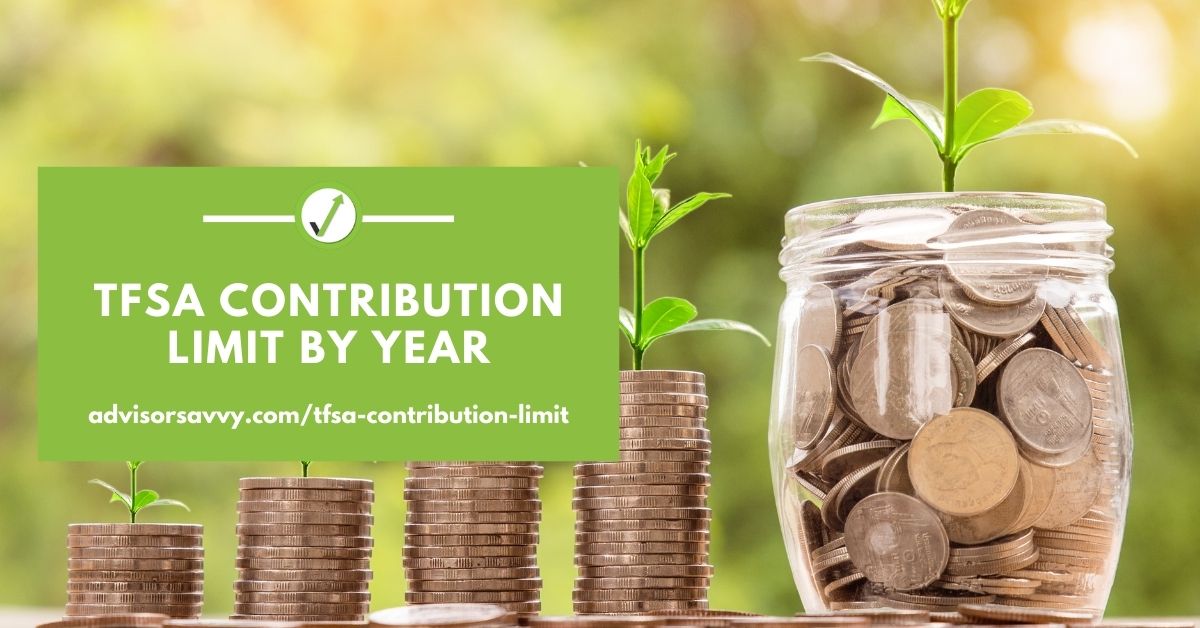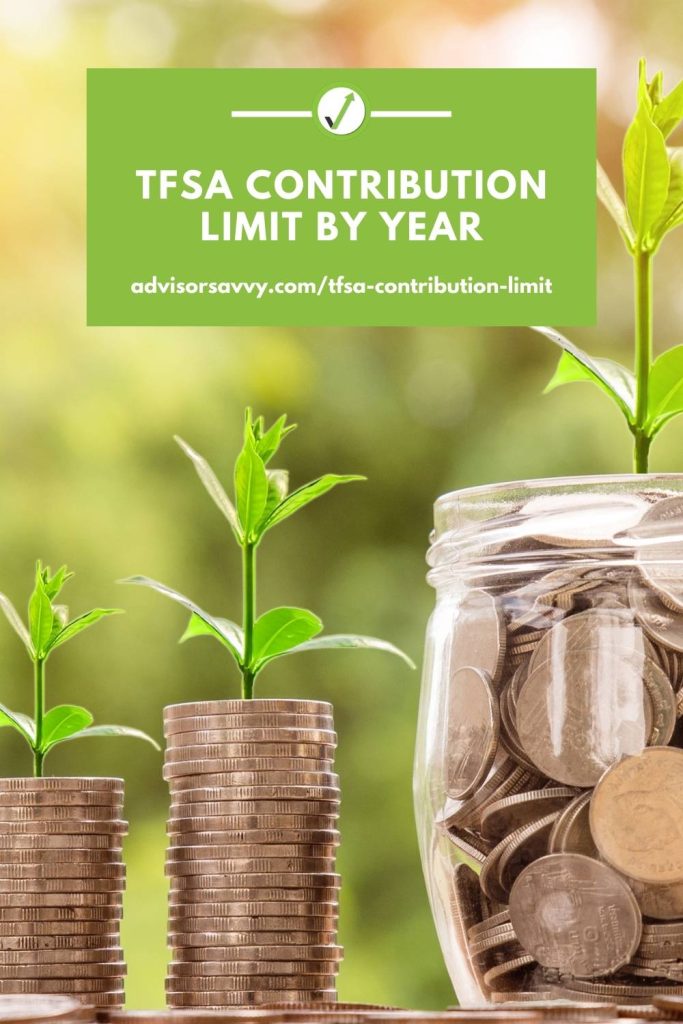
In 2009, the federal government created the Tax-Free Savings Account or TFSA. It was designed to encourage Canadians to save and invest with funds that remain accessible and tax-free. As a result, making a TFSA contribution for as much and as often as possible is the best way to pay less tax on your income gains. And to make sure you maximize your account, it’s important to know the TFSA contribution limits each year.

Table of contents
- How does the TFSA work?
- What is the TFSA limit for 2023?
- When can you contribute to your TFSA?
- What are the past TFSA con tribution limits?
- Is there a lifetime limit on TFSA contributions?
- How much can I put in my TFSA if I have never contributed?
- How much should I put in my TFSA?
- What happens if you over contribute to a TFSA? Is there a penalty?
- Calculate your TFSA limit
How does the TFSA work?
A TFSA works like any savings account in that you can contribute whatever money you want, up to a government-set limit. This limit can (and often does) change year over year. In addition, you can withdraw from it whenever you want, without penalty. While in the account, the money accrues interest.
What sets TFSAs apart? The interest that would typically be subject to taxation in an unsheltered account is tax-free when invested in a TFSA.
While it’s called a savings account (and for many people, it’s just that) just about any investment that can be held in an RRSP can go into a TFSA — think bonds, stocks, mutual funds, exchange-traded funds (ETFs), options, and more. Ultimately, it’s a savings shelter that’s similar to an RRSP. As a result, your money grows at a faster rate (interest rates range from around 0.75% to 3%).
Given the account’s accessibility and flexibility, it makes a great place for your emergency fund or as a way to save for a specific goal. Since you can hold multiple TFSAs, you can designate one for each other these goals — for example, saving for a dream vacation and also for a down payment.
What is the TFSA limit for 2023?
The TFSA contribution limit for the 2022 tax year was $6,000, the same as it’s been since 2019. In late 2022, the Canadian government announced the TFSA contribution limit for 2023 would be $6,500, a slight increase from the last few years. As for 2024, the limit will increase again to $7,000.
If you haven’t contributed to a TFSA since it was first introduced, this means the total maximum contribution limit up to and including the year 2024 is $95,000 — as long as you’ve been over 18 since 2009 and have a valid social insurance number. (And yes, you can contribute this as a lump sum, as long as you meet the qualifications!)
Related Reading: Top 5 TFSA Mutual Funds in Canada
When can you contribute to your TFSA?
Any time — whenever you want, throughout the year! All TFSA contributions made until December 31 count toward your limit for the year. Any unused contributions are simply rolled over to the next year.
What are the past TFSA contribution limits?
With the exception of 2015, when the maximum contribution was spiked to $10,000, the most you can contribute hasn’t changed dramatically, year-over-year. Here’s a look at the contribution limits since the inception of the TFSA:
| Tax Year | TFSA Contribution Limit |
| 2009 | $5,000 |
| 2010 | $5,000 |
| 2011 | $5,000 |
| 2012 | $5,000 |
| 2013 | $5,500 |
| 2014 | $5,500 |
| 2015 | $10,000 |
| 2016 | $5,500 |
| 2017 | $5,500 |
| 2018 | $5,500 |
| 2019 | $6,000 |
| 2020 | $6,000 |
| 2021 | $6,000 |
| 2022 | $6,000 |
| 2023 | $6,500 |
| 2024 | $7,000 |
Is there a lifetime limit on TFSA contributions?
Many people contribute a set amount to their TFSA throughout the year. Keeping an eye on this amount can help prevent over-contributions from happening. Make sure your TFSA earns money, instead of costing you money!
How much can I put in my TFSA if I have never contributed?
The amount you can contribute to a TFSA depends on the year you turned 18. If you turned 18 before the year of 2009, then you have a total contribution room of $95,000 for 2024 (assuming you never contributed before). But if you turned 18 after 2009, the calculation is a bit more complex. Essentially, it’s the sum of all the contribution limits by year starting in the year which you turned 18. So, if you turned 18 in 2020, your TFSA contribution limit would be $31,500 ($6,000 + $6,000 + $6,000 + $6,500 + $7,000).
Alternatively, you can check your CRA My Account to determine the TFSA contribution limit available to you right now. Also, recent tax filings will likely show your current TFSA contribution limit. However, you must open an account first before obtaining this information through CRA portals and notifications.
How much should I put in my TFSA?
As much as possible! In other words, the more you contribute, the less tax you pay. And the more of your own hard-earned money stays in your pockets.
Ideally, 20% of each pay cheque goes into a savings vehicle like a TFSA. Of course, this percentage could fluctuate depending on your income. If you’re automating contributions, make sure to keep the limit in mind when setting the amount.
What happens if you over contribute to a TFSA? Is there a penalty?
As with all investment products, there are limits and rules to what and when you can contribute. If you go above the allotted maximum, there is typically a penalty. Similarly, TFSA over-contributions are subject to a tax.
If you exceed your TFSA contribution limit, the amount that you’ve over-contributed is subject to a 1% per-month penalty. For example, if you over-contribute $1,000, you pay a penalty of $10 every month for as long as that excess sits in your TFSA. So if you hit the annual limit by August, and this $1,000 over-contribution stays in your account until the end of the year, you’ll pay $50 in penalties.
Calculate your TFSA limit
There are a few methods you can use to calculate your own TFSA contribution limit. It’s a fairly easy thing to do if you were already 18 when the TFSA was first introduced in 2009. For starters, you can take a look at the list above to see what the max TFSA contribution limit is by year. On the other hand, if you have already contributed to a TFSA, deduct the total amount of those contributions from the total allowable limit. The number you are left with is your current maximum allowable contribution.
Similarly, you can log into your CRA account, and click on the RRSP and TFSA section. Here, you will be able to see your personal contribution limit. You can also call the Tax Information Phone Service (TIPS) at 1-800-267-6999.
Read More: How to Withdraw Money from TFSA
TFSAs are a great savings tool that you should absolutely take advantage of if you’re able. Maximize those limits! You’ll be glad you did when you meet your savings and investing goals.
